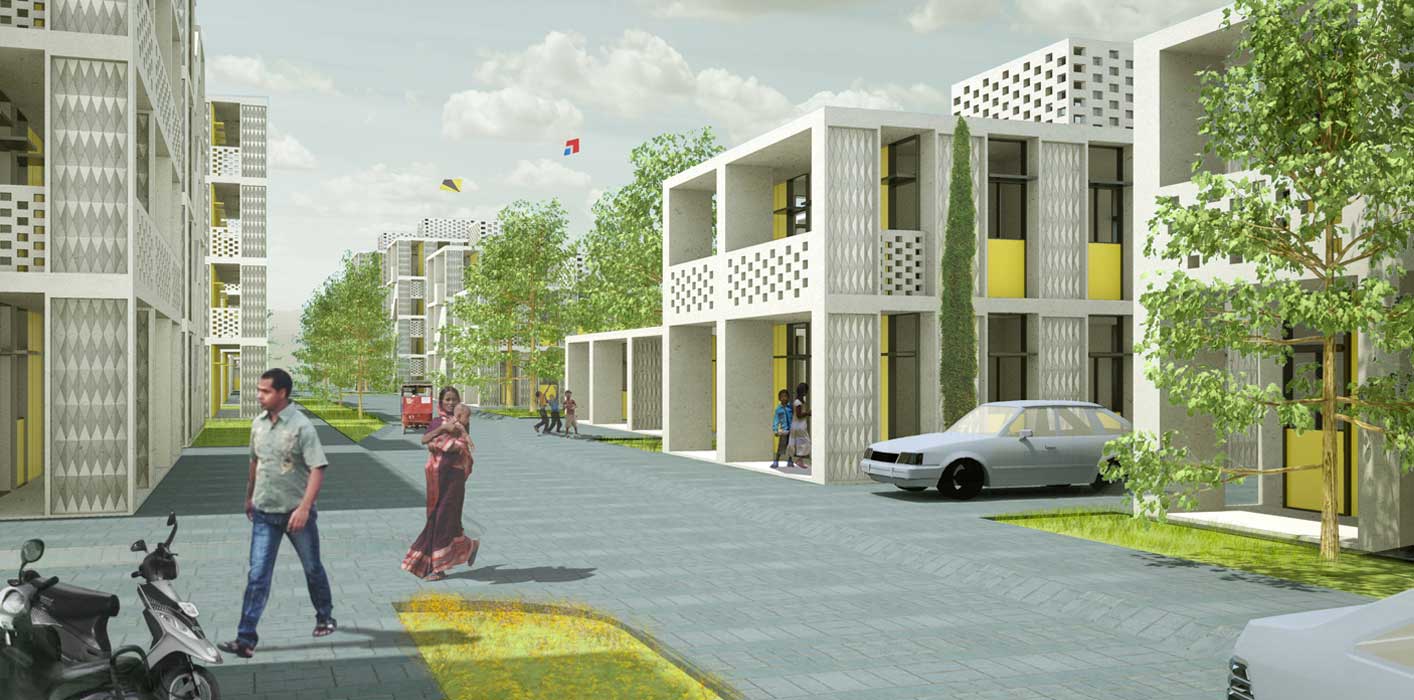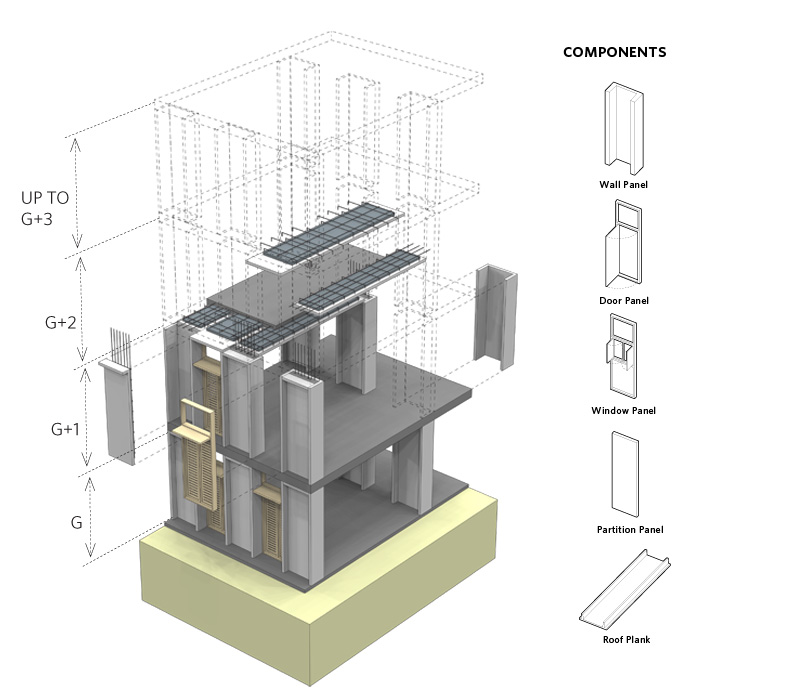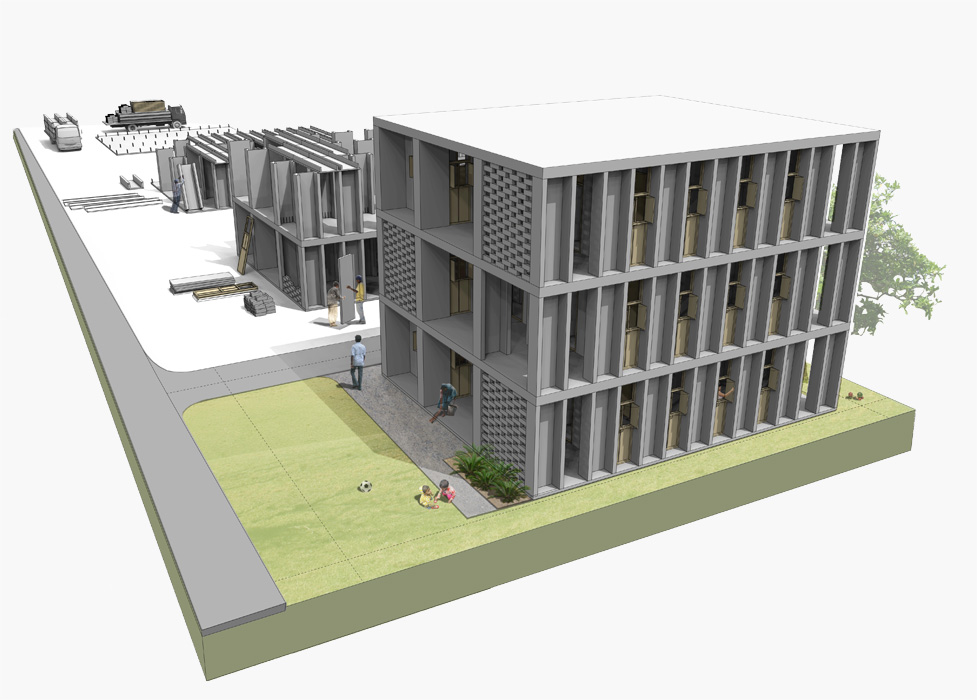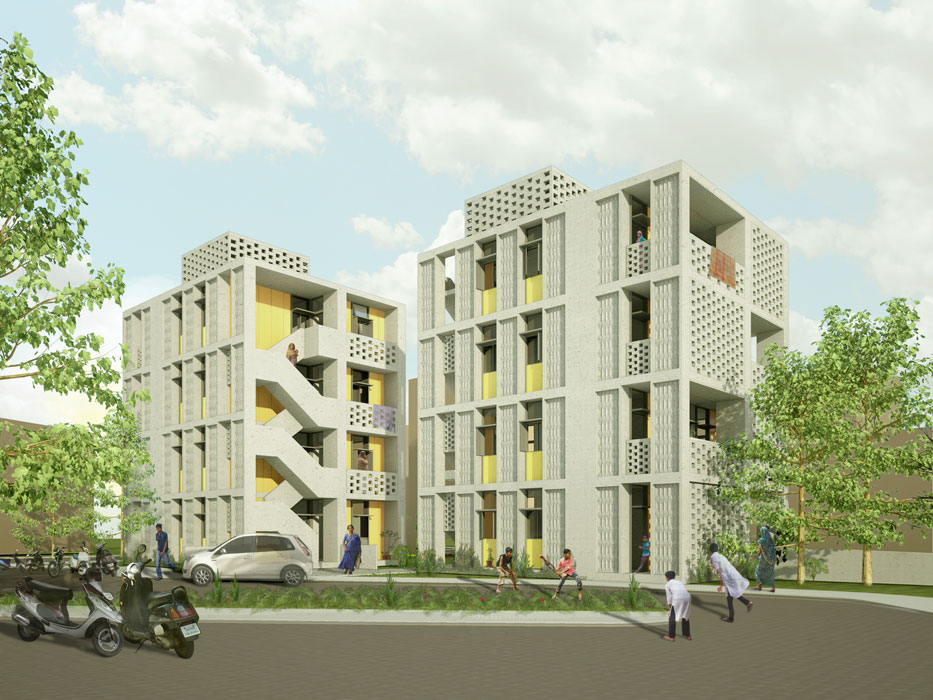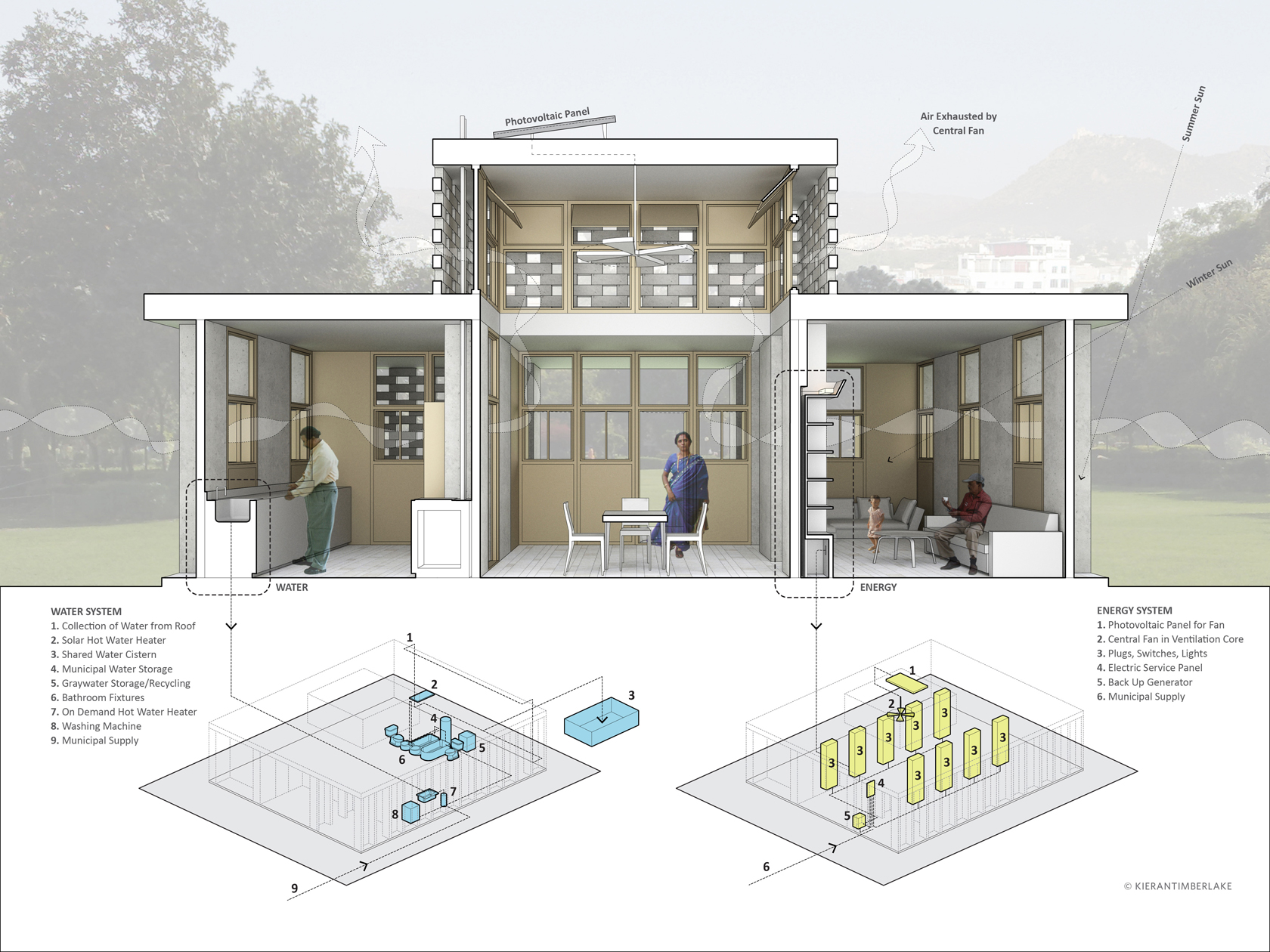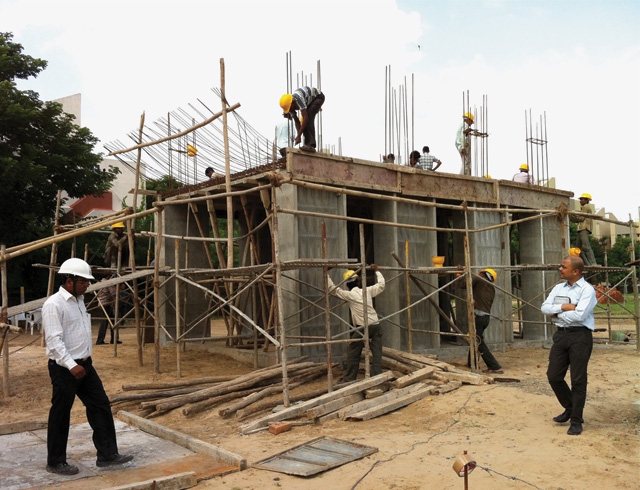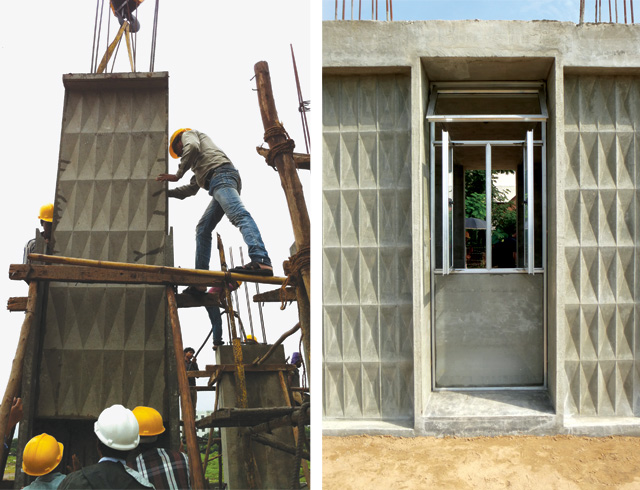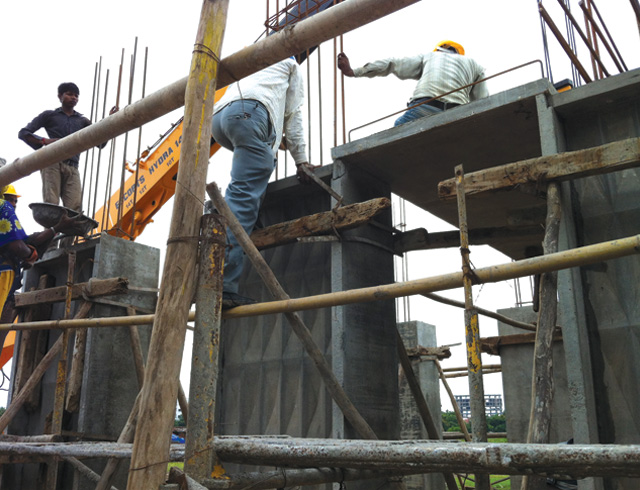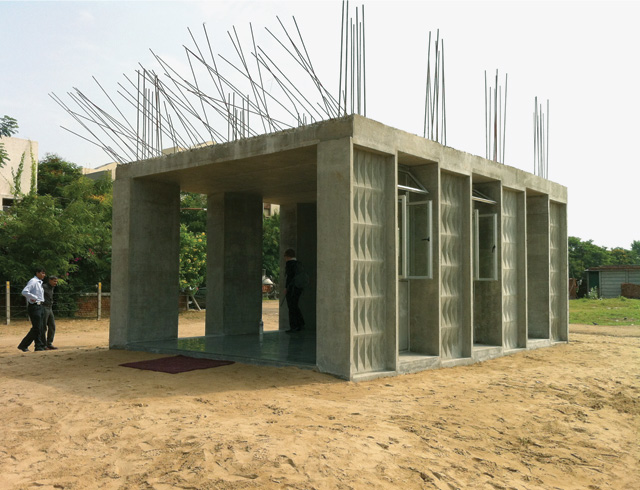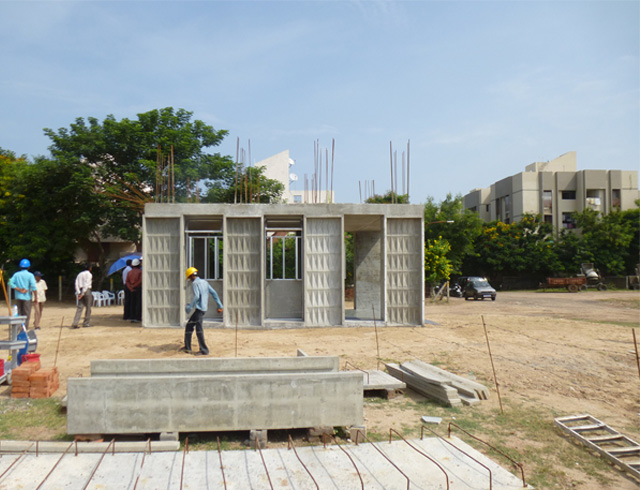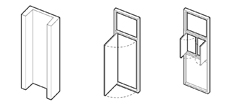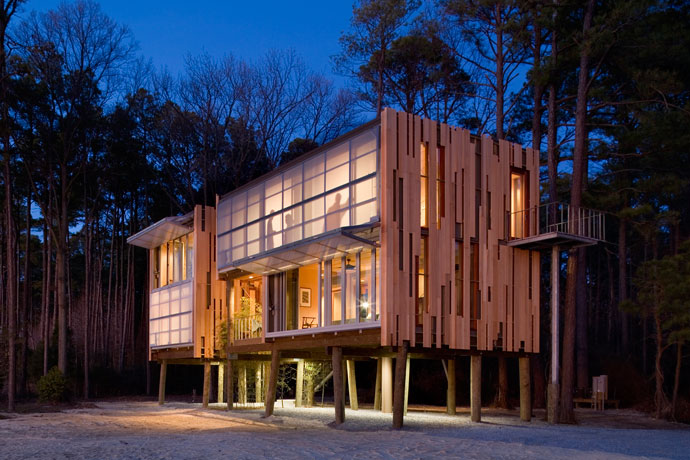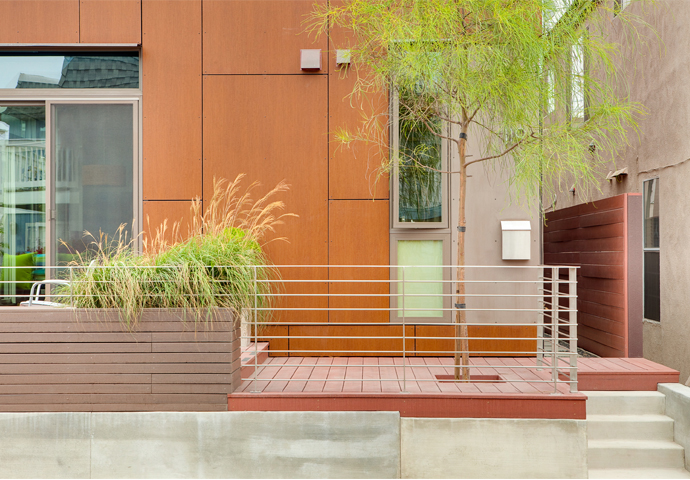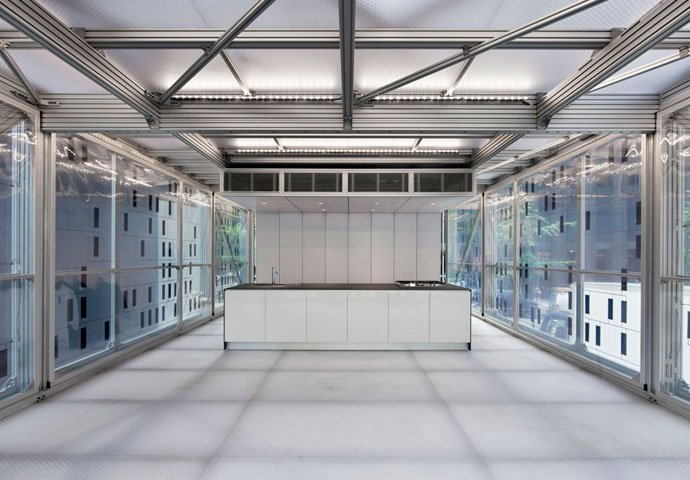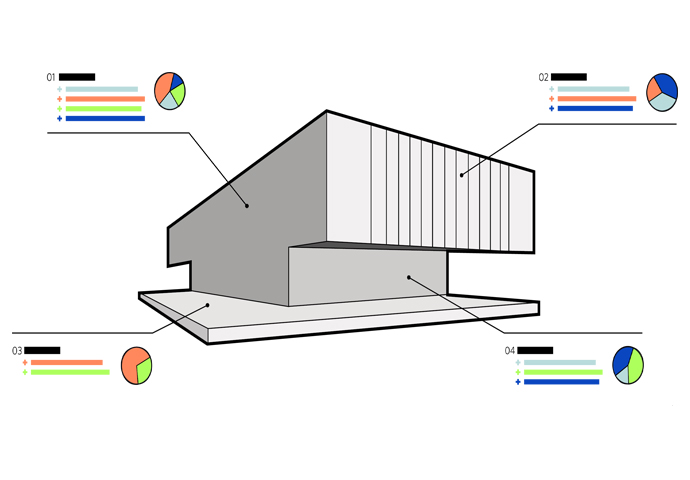How can we create an affordable, solid, and renewable housing product to meet the demand among India's rising middle class?
This diagram shows key factors that needed to be resolved in designing Ideal Choice Homes for the Indian context, including climate, resources, cost, and manufacturing logistics.
A growth in population of 181 million people in India over the past decade has led to a critical housing shortage for middle- and low-income people as well as a sharp increase in demand for water and energy. However, existing material supply chains, construction technologies, and utility systems cannot keep pace with this new reality. In many cities, water and energy supplies are discontinuous, with water access limited to as little as thirty minutes per day in some places. Construction of a single-family housing unit typically employs wet masonry techniques, prolonging completion up to twenty-four months. At the same time, home financing and household incomes have increased, making home ownership viable for a greater portion of the population and giving rise to a need for a new housing type that relies on a more efficient construction method.
Methodology
Our goal was to develop a methodology that would promote sustainable growth by conserving resources throughout all building phases—from material supply chain to construction and habitation. We conceived Ideal Choice Homes in partnership with an asset management company and a development company, both based in India. Our search for a whole-building solution required research into all aspects of off-site fabrication, supply chain, and climatic considerations. We asked and answered nearly fifty questions across various categories, covering affordable cost, efficient construction, mass-customizable materials, resource conservation, thermal comfort, and owner self-sufficiency. We interrogated target market, housing typologies, familial room-use patterns, development incentives, flood potential, seismic risk, air and water pollution, solid waste infrastructure, labor, and the Indian Green Building Council's Green Homes Rating System.
To address scarcity and low quality of water, Ideal Choice Homes provides a means of harvesting and recycling gray water to increase the availability of water to 24 hours per day. Hot water is supplied using a rooftop mounted solar hot water heater.
Holistic Solution
Unlike competing systems, Ideal Choice Homes is a holistic solution that leverages established knowledge of precast concrete to satisfy a cultural preference for “pukka,” or solid, construction (as opposed to moveable, impermanent forms of construction). Like other permanent homes in India, it appears solid to sight and touch. Yet it is a clear departure from traditional construction in that it is engineered for off-site manufacture, delivery, and on-site assembly.
The house responds to a wide range of seasonal variation.
The primary structural component is a concrete wall panel, shaped to self-shade in eastern and western orientations. We investigated several concrete mix designs using combinations of aggregates and fibers available for manufacturing in India. Mockups and prototypes were built to ensure that components met multiple goals, including thermal comfort and easy transportability, eliminating the need for material handling equipment for single-story construction. This new methodology significantly reduces construction time—from 24 months to an estimated three months.
Ideal Choice Homes allows owners to manage thermal comfort, increase self-sufficiency, conserve water, and decrease the need for air conditioning. The house responds to a wide range of seasonal variation by minimizing solar gain through overhangs and shading during the summer, encouraging air movement through cross ventilation, and minimizing air infiltration during the winter. To address scarcity and low quality of water, it provides a means of harvesting and recycling gray water to increase the availability of water to twenty-four hours per day.
Both a product and a process by which homes may be mass customized and mass produced through a managed supply chain, Ideal Choice Homes offers a logistically and environmentally responsible residence of concrete construction that is affordable and swiftly constructed. Owners can choose to expand their houses; they can manage thermal comfort both actively and passively; and perhaps most crucially, they can become self-sufficient in the likely event of water and energy scarcity. Currently, Ideal Choice Homes is poised for full-scale prototyping in the Indian context.


